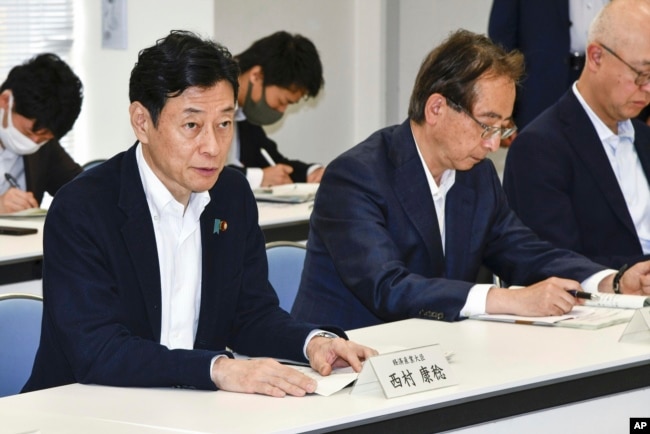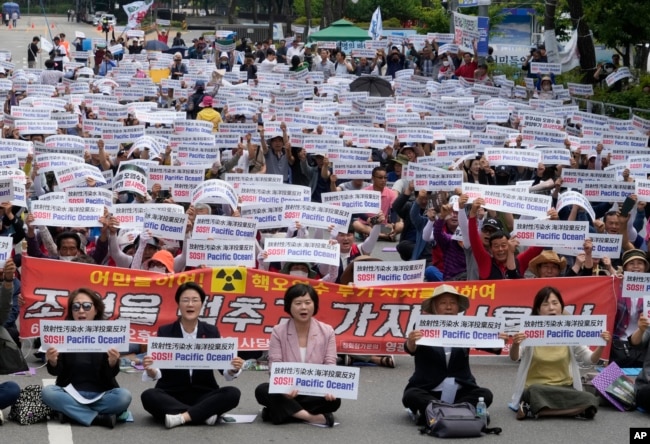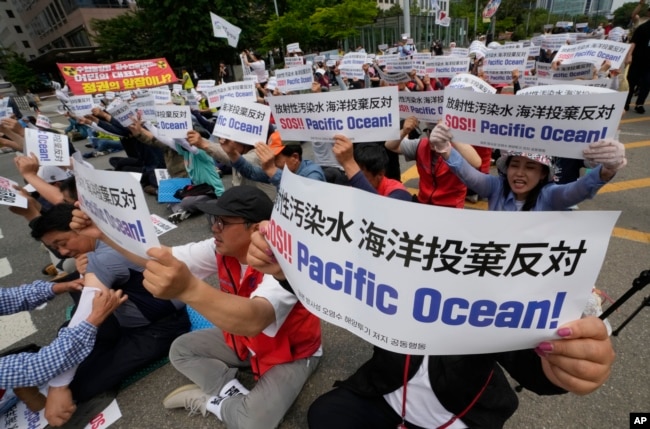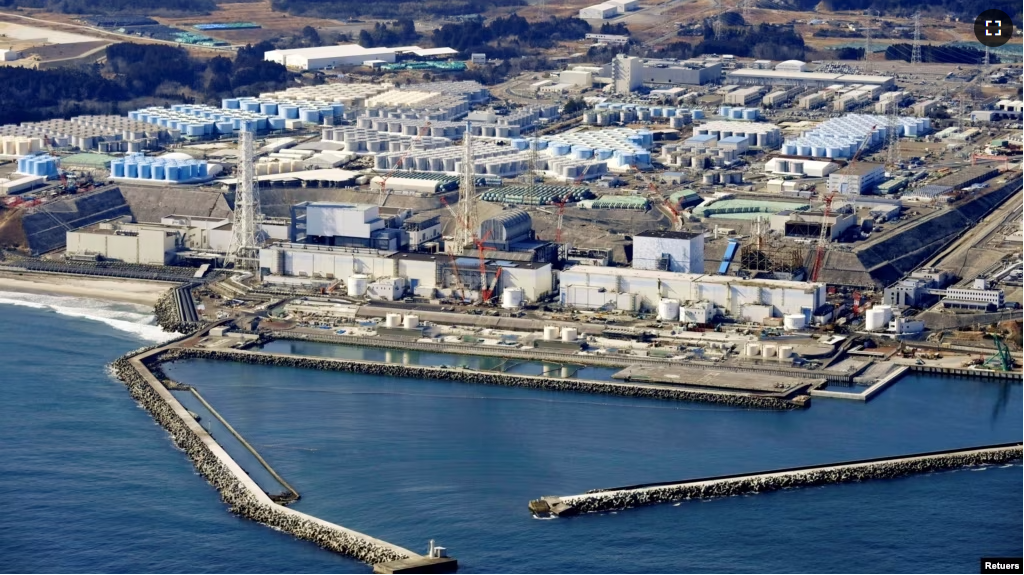The operator of Japan’s damaged Fukushima nuclear center has begun testing a process to release treated wastewater into the sea.
Tests began Monday as workers examined processing equipment at the newly-completed seaside pumping center, said Tokyo Electric Power Company Holdings (TEPCO).
The water release is necessary to move forward with cleanup efforts at the Fukushima center. Three reactors there suffered meltdowns after a 2011 earthquake and huge ocean waves destroyed the plant’s cooling systems. The disaster forced 160,000 people to flee nearby areas poisoned by radioactive material.
The water has already gone through a process designed to remove harmful materials. This is why the government describes it as “treated” and not “radioactive.” But experts say it is impossible to remove all the radioactivity. TEPCO and government officials say tritium – a radioactive form of hydrogen – is the only substance that cannot be removed from the water. They say tritium is not considered harmful in small amounts.

Equipment will first mix the treated water with large amounts of seawater. The mixture will then enter an undersea passage, called a tunnel, to be released into the Pacific Ocean about 1 kilometer from the coast.
The testing by TEPCO is expected to last about two weeks. After that, the pumping operation will need to be examined by the country’s Nuclear Regulation Authority. Those required tests are likely to begin in early July.
Japan’s government announced plans in April 2021 to slowly release the treated water, which it says meets safe levels.

But the plan to release water into the sea has faced strong protests from local fishing communities. They are worried about safety and fear the plan will hurt seafood businesses.
Nearby nations – including South Korea, China and Pacific Island nations – have also raised safety concerns. Japan’s government has set up a financial assistance program to help affected fishing communities.
Fishing officials again voiced their opposition to the plan during a weekend visit to the area by Industry Minister Yasutoshi Nishimura.

Tetsu Nozaki is head of a local fishing organization. He told Nishimura that local fishermen still “stand by” their opposition. He added, however, that his group supports progress in the plant’s decommissioning and hopes to continue negotiations with the government. Currently though, he admitted the two sides “remain wide apart.”
In South Korea, fishermen protested the plan Monday in front of the country’s National Assembly in Seoul.
Japanese officials say the treated water will be released into the ocean over many years, making it harmless to people and sea life. Japan has sought support from the International Atomic Energy Agency during the process. This aimed to gain credibility with the public and ensure that safety measures meet international requirements.
I’m Anna Mateo.
The Associated Press reported this story. Bryan Lynn adapted the report for VOA Learning English.
_________________________________________________________________
Words in This Story
decommission – v. to take equipment or weapons out of use
credibility – n. the fact that someone can be believed or trusted
